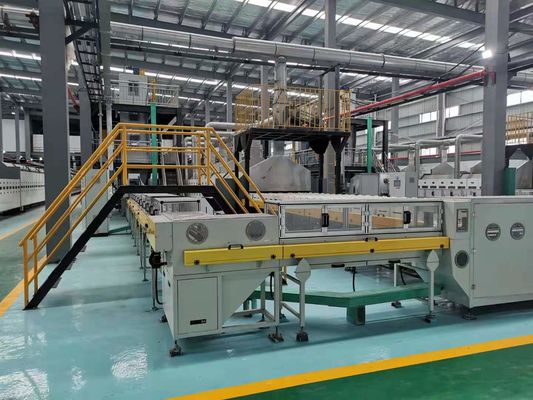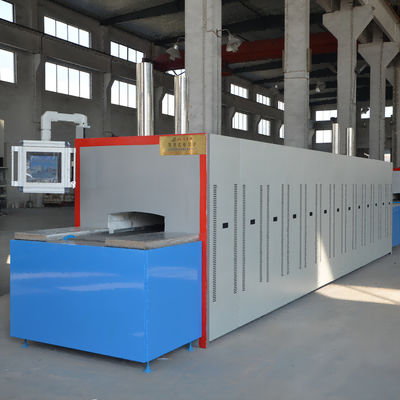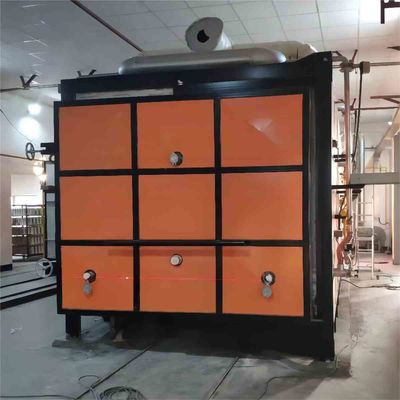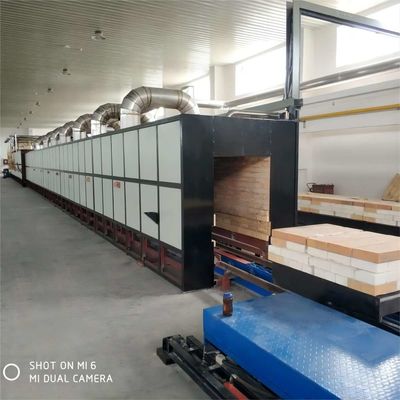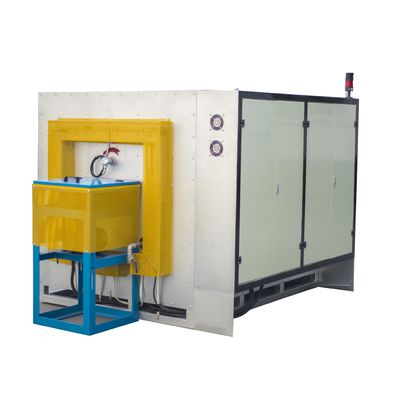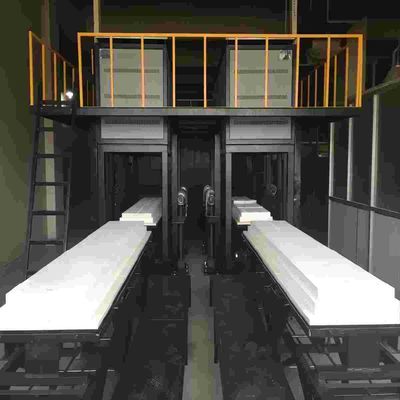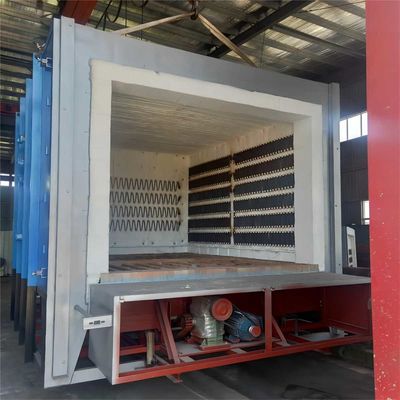The roller hearth furnace manufactured by Jiangsu Qianjin Furnace Industry Equipment Co., Ltd. is highly suitable for the processing of anode materials, especially in industries like lithium - ion battery production, metallurgical processing, and carbonization production.
Anode materials, which are typically used in batteries and various electrochemical processes, require precise heat treatment to achieve the desired properties, such as improved conductivity, stability, and performance.
Here’s a detailed look at how Jiangsu Qianjin’s roller hearth furnaces are used for processing anode materials:
1. What are Anode Materials?
Anode materials are essential components of batteries, especially lithium - ion batteries used in electric vehicles (EVs), smartphones, laptops, and other electronic devices. Common anode materials include:
·Graphite (natural or synthetic)
·Silicon - based compounds
·Lithium titanate (for fast - charging batteries)
·Composite anode materials (graphite - silicon blends, etc.)
The quality and uniformity of these anode materials significantly impact the performance, cycle life, and charging efficiency of the batteries they are used in. This is where roller hearth furnaces come into play.
2. How Roller Hearth Furnaces Work for Anode Materials
Roller hearth furnaces are particularly well - suited for continuous high - temperature processes that require uniform heating and controlled atmosphere. For processing anode materials, these furnaces typically operate under vacuum or inert gas atmospheres to prevent oxidation and ensure the purity of the material. Here's how the furnace is used for anode material processing:
2.1Uniform Heating for Quality Consistency:
·The roller hearth furnace ensures uniform heat distribution as the material moves continuously through the furnace on rollers. This is critical for maintaining consistent quality in the anode material, which must undergo a precise graphitization or baking process.
·Graphite materials, for example, require high temperatures to achieve the correct crystalline structure that improves conductivity and stability during battery use.
2.2Controlled Atmosphere:
·Inert Gas Atmosphere: The furnace can be equipped with a nitrogen or argon atmosphere to prevent oxidation of the anode materials, especially important for graphite and composite anodes.
2.3High - Temperature Heat Treatment:
·For graphite anodes, the material is often subjected to temperatures ranging from 1,200°C to 1,300°C in a high - temperature furnace to promote carbonization.
·For silicon - based anode materials, the furnace may need to heat the material to temperatures around 1,200°C to form stable structures or to sinter the silicon material with binders or other additives.
2.4Energy Efficiency and Cost Savings:
·Energy - efficient designs help reduce operating costs during the high - temperature processes required for anode material production.
·Features like heat recovery and high - efficiency burners optimize the energy consumption during long continuous runs, which is typical in large - scale anode material production.
2.5Automated Process Control:
·Automated control systems allow for precise regulation of temperature, atmosphere, and heating time, ensuring the anode material undergoes consistent treatment throughout the furnace.
·This precise control is essential in battery manufacturing, where even small variations in anode material properties can significantly impact the performance of the final battery.
3. Specific Applications for Anode Material Processing
3.1Graphitization of Synthetic or Natural Graphite:
·The furnace is used to convert carbon - based materials (e.g., petroleum coke, pitch or coal tar pitches) into graphite by exposing them to high temperatures. This process increases conductivity and makes the material suitable for use in battery anodes.
3.2Sintering of Silicon - Based Materials:
·Silicon is often used in next - generation batteries due to its high energy density. Roller hearth furnaces can be used for sintering silicon anodes, where the furnace provides a controlled environment for achieving the right balance of conductivity and volume expansion tolerance.
3.3Baking and Binding of Composite Anode Materials:
·For composite anodes (such as mixtures of graphite and silicon), roller hearth furnaces are used to bake or sinter the anode mix. The precise control of temperature ensures the binder and active material form a stable and uniform structure, which is crucial for the performance of the battery.
3.4Heat Treatment of Carbon - Based Precursor Materials:
·Materials like mesophase pitch or coal tar pitch used in graphite production undergo a heat treatment process to improve their properties. The roller hearth furnace ensures that this process occurs at high temperature and with uniform heating, which is vital for the final product’s consistency and quality.
4. Key Benefits of Using Roller Hearth Furnaces for Anode Materials
4.1Continuous and High - Volume Processing:
·The roller hearth furnace can process large volumes of anode material continuously, making it ideal for the high - demand environment of battery production.
4.2Controlled Atmosphere for Purity:
·The ability to operate under an inert atmosphere ensures that the anode material remains free from contaminants, which is crucial for the long - term stability and efficiency of lithium - ion batteries.
4.3Uniform Heating for Consistent Properties:
·The furnace’s design ensures that the material is exposed to consistent heat throughout its passage, which is critical for achieving uniform properties across large batches of anode material.
4.4Energy Efficiency:
·Roller hearth furnaces designed for anode material production are often equipped with energy - saving features, reducing the overall cost of operation in energy - intensive processes.
4.5Precision Control:
·Automated systems help to precisely control temperature, atmosphere, and time in the furnace, ensuring that the anode material meets the necessary specifications for high - performance batteries.
5. Applications in the Lithium - Ion Battery Industry
·Battery Manufacturers: Leading battery makers rely on high - precision furnaces like Jiangsu Qianjin’s roller hearth furnaces to process raw materials into high - performance anodes.
·Graphite Producers: Companies involved in the production of synthetic graphite or graphite - based composites use roller hearth furnaces to achieve consistent and high - quality products.
·Battery Material R & D: Roller hearth furnaces are also used in research and development settings to experiment with new anode materials and formulations, accelerating innovation in the battery industry.
Jiangsu Qianjin Furnace Industry Equipment Co., Ltd.'s roller hearth furnaces are a vital piece of equipment for the high - precision processing of anode materials used in energy storage systems, particularly in the lithium - ion battery industry. Their ability to provide continuous, high - temperature processing with precise temperature control, along with a controlled atmosphere, makes them ideal for producing anode materials like graphite, silicon, and composite materials, which are essential for the next generation of energy storage technologies.

 Your message must be between 20-3,000 characters!
Your message must be between 20-3,000 characters! Please check your E-mail!
Please check your E-mail!  Your message must be between 20-3,000 characters!
Your message must be between 20-3,000 characters! Please check your E-mail!
Please check your E-mail! 
